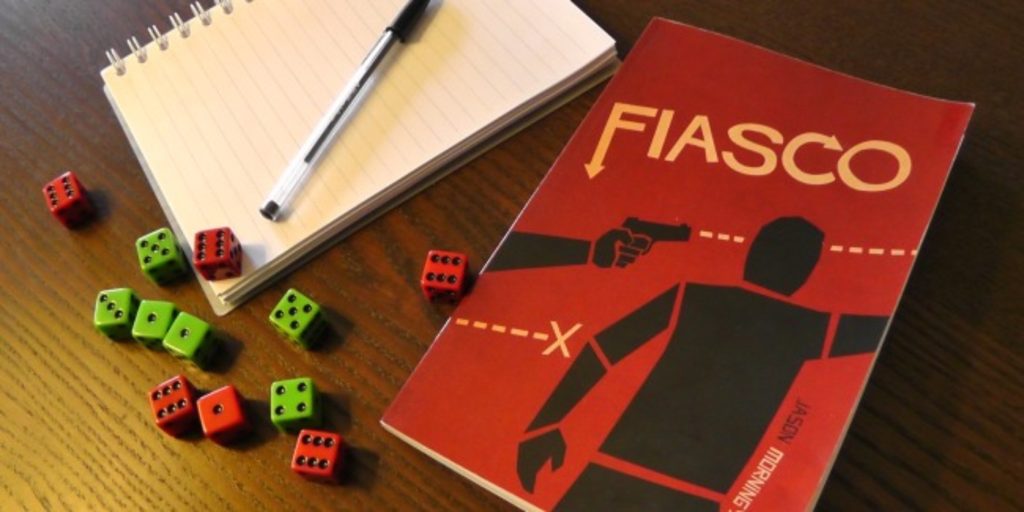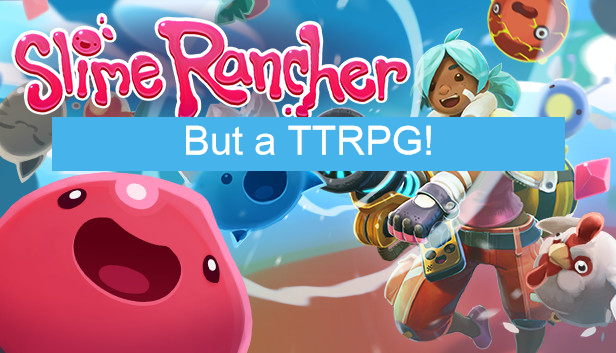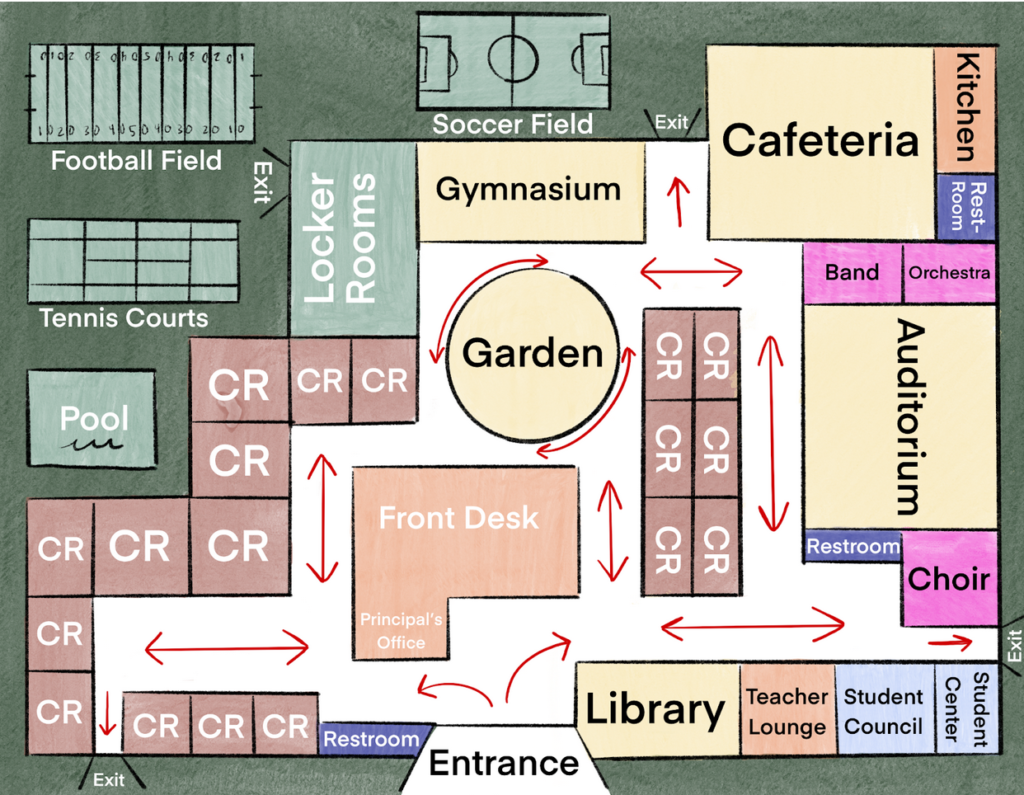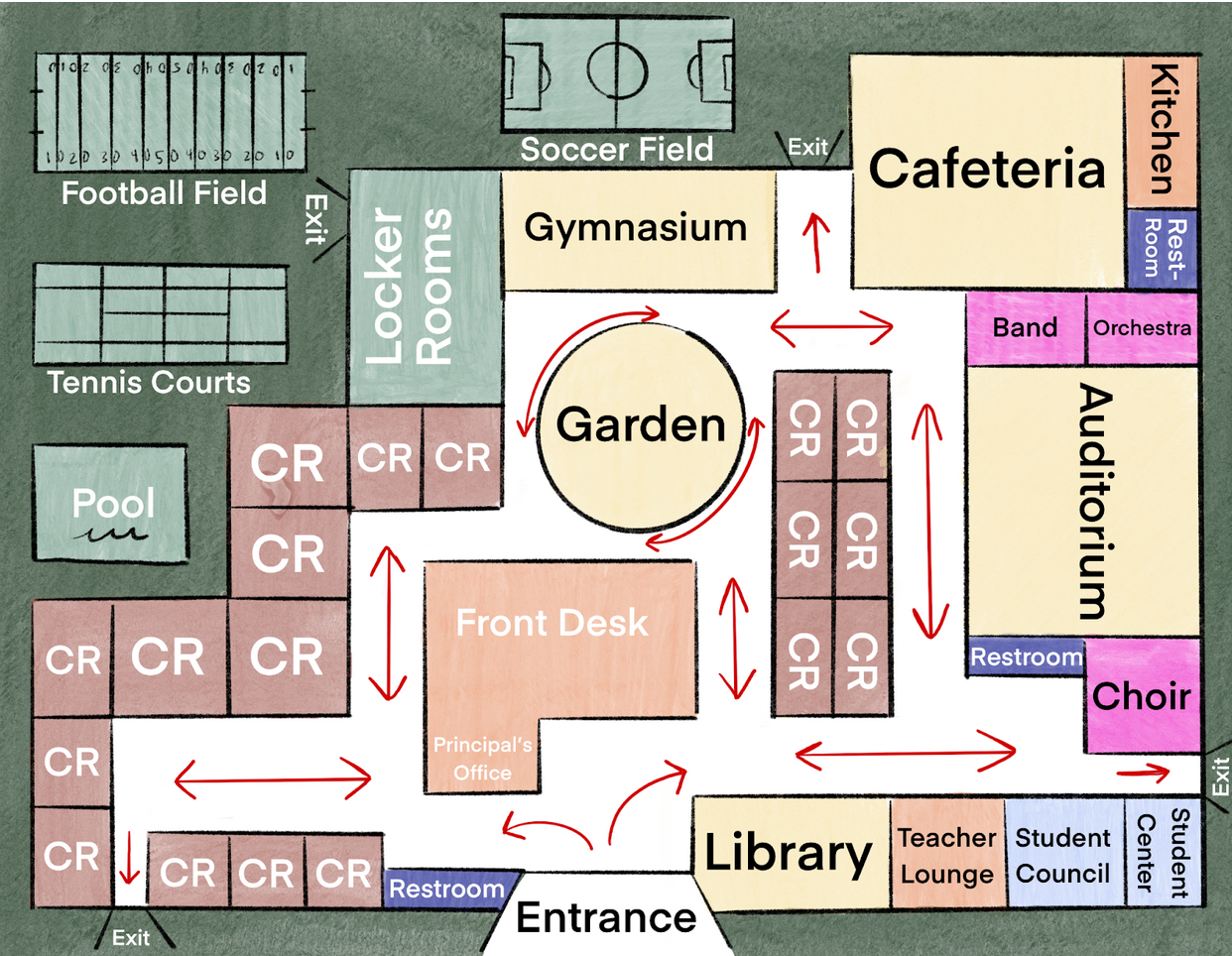By Team Justin – Justin, Josephine, Jacob, Ryan, and Yamilett
We started our game by playing Fiasco. From Fiasco, we found that the rules were heavily aiming for a conversational tone, and this detracted from their clarity. The part we enjoyed the most, albeit modified, was the set up in creating the characters, places, and relationships. Particularly, we enjoyed the way that Fiasco created a circular and interconnected web of relationships that was complex but, because it was built throughout a fluid process, also intuitive. It felt like something created collaboratively by all the players in the framework of the game.

During our first brainstorming session, we tried to carry these system ideas into what our game would look like. Initially, we began with a slime or monster rancher style RPG game where the players would each be their own monster ranch owners. However, as we worked through the idea, it became unclear what the objective might be for the players. Was this just slice of life? Should we encourage competition or cooperation? We also struggled with imagining how a scenario or turn may play out with a monster farming mechanic.

We tossed out more ideas and eventually landed on a dating simulation taking place in high school. While this could have the same “objectiveless” element as the monster rancher, we found more ground for creating and developing character motivations. We liked this because our previous ideas felt like either there were no motivations for players or the goal was given by the game and there was no room for personalization, but in a relationship-based high school scenario, players have several natural motivating factors and can evolve their own ambitions and play style from the setting.

Our game relies mainly on the Fiasco system but modified down to reduce its length and complexity. We simplified much of its system by simply determining character motivations and relationships with 1 or 2 dice rolls each. This took away a lot of Fiasco’s complexity and the confusion we had while playing with its black and white dice, its 4 dice per player, and its rather long set up process. What we aimed to keep were the discussion that occurred during character set up and decision-making moments, and the improvised scenes that naturally feel like they progress the story. We also took away Fiasco’s ability to have scenes play out scenes in either the past or future to keep the story focused and progressing forward in the present.
To work on our design, we started with several meetings with the whole group and discussed the general narrative/setting and how the structure of the game would create a space for players to explore the setting. Brainstorming the world started slow, with several concepts being considered and thrown out. Once we found the idea for Hectic High, though, we found that everyone had both excitement and new ideas for this setting, so we continued fleshing it out to see if we could come up with a full game from it. After discussing the progression of a full game of Hectic High and how scenes and relationships would develop, we felt ready to split up and each work on a different section of the rules and story. Splitting up the rules in this way caused some issues, as we often had people waiting for one section of rules to be written so their dependent section could be made, but in general we found that we had solidified our rules in group meetings and all we had to do individually was write them down and make a few small design decisions. We then met again all together to make sure the rules we had written worked as one and made some small changes, then once again divided to implement these last modifications and do a final readthrough and polish of the rules.

